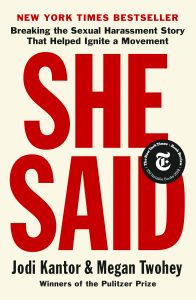

JODI KANTOR
She Said: Breaking the Sexual Harassment Story That Helped Ignite a Movement
by Jodi Kantor
Monday, March 9, 2026
6:30 – 8:00 p.m.
Tattered Cover Book Store
2526 E Colfax Avenue, Denver, CO 80206
Book Club Resources coming soon!


by Jodi Kantor
Monday, March 9, 2026
6:30 – 8:00 p.m.
Tattered Cover Book Store
2526 E Colfax Avenue, Denver, CO 80206
Book Club Resources coming soon!